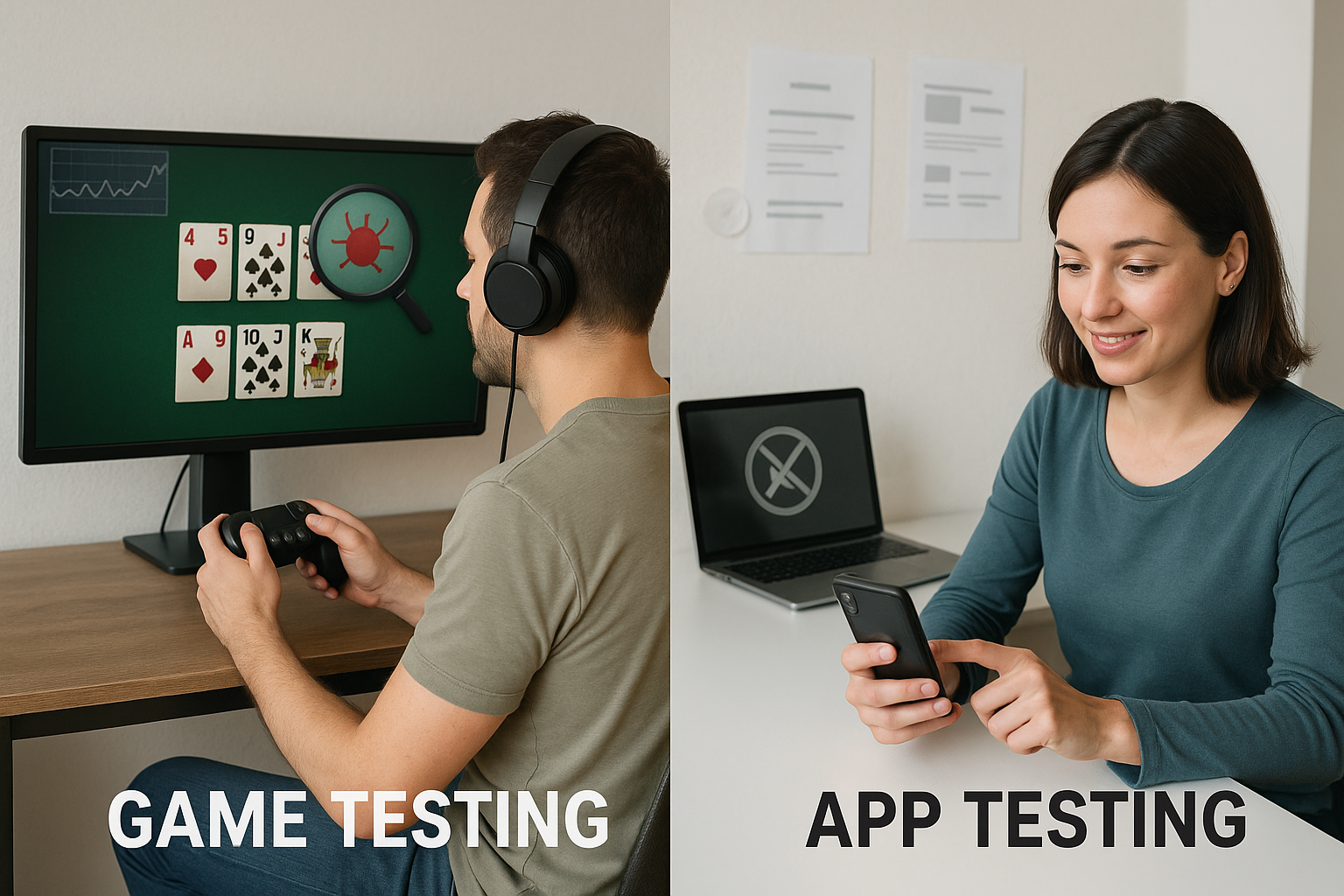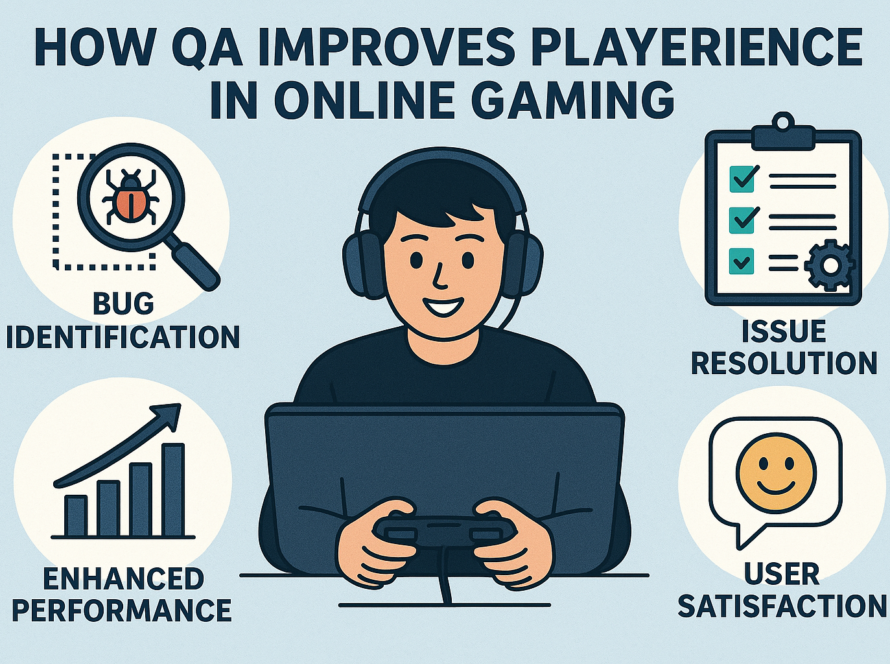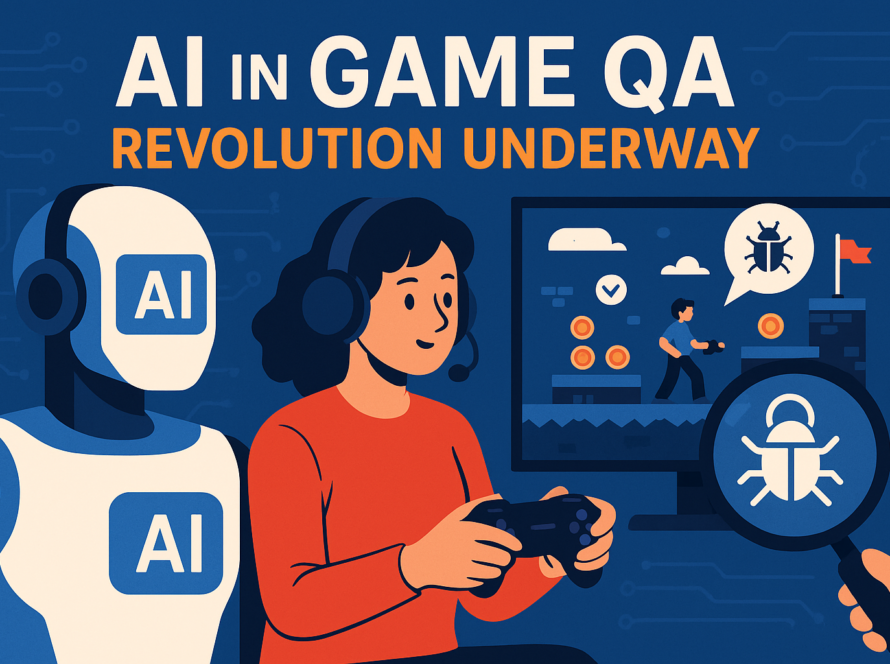In the realm of software quality assurance, one size doesn’t fit all. While both games and apps are digital products, the QA process behind them differs drastically. If you’re building a game or a traditional application, understanding the distinction between game vs app testing is critical for ensuring a flawless end-user experience.
Both demand high-quality outcomes, but their development cycles, user interactions, and technical expectations set them apart. Let’s dive deep into how testing a game compares to testing an app—and why it matters more than you think.
What is App Testing?
App testing refers to the process of evaluating the functionality, usability, performance, and security of an application. These could be mobile apps (like a payment wallet), web apps (like an online store), or desktop software. The key focus of app testing is to ensure that the app meets business goals and functions reliably across different environments.
App testing usually includes:
- UI/UX consistency checks
- Functional testing of workflows
- API integration validation
- Load and performance testing
- Security assessments
- Cross-device compatibility tests
The emphasis is on stability, utility, and seamless task execution.
What is Game Testing?
Game testing, on the other hand, is a specialized QA domain focused on evaluating the overall gaming experience. It goes far beyond simple bug detection. The goal is to test mechanics, physics, gameplay flow, responsiveness, visual effects, audio feedback, and player engagement.
In this process, QA testers simulate real player behavior—both expected and unexpected—to ensure the game holds up under diverse scenarios.
Game testing covers areas like:
- Game logic and scoring accuracy
- Multiplayer synchronization
- AI behavior validation
- Physics engine testing
- Frame rate and GPU performance
- Storyline bugs and level progression
Because games are interactive, non-linear, and rich in visuals and sound, QA requires a different mindset and toolset.
Game vs App Testing: Core Differences
Here are the major differences that set game vs app testing apart:
1. User Expectations and Goals
- Apps are utility-driven. Users expect them to function correctly and solve a problem efficiently.
- Games are experience-driven. Players expect immersion, challenge, and smooth controls.
App testing ensures productivity; game testing ensures entertainment and fairness.
2. Complexity of Interactions
- Apps typically follow linear workflows—login, browse, purchase, logout.
- Games involve dynamic decision-making, branching logic, real-time inputs, and unpredictable behavior.
The interactive depth of games makes testing more intensive and scenario-rich.
3. Performance Requirements
App performance focuses on backend response times, crash reporting, and battery consumption.
Games must be tested for:
- Frame rate consistency (especially 60+ FPS)
- GPU load under stress
- Real-time rendering and latency
- Complex animations and sound sync
In gaming, even minor lags can ruin the experience. That’s why performance testing in games must be more rigorous.
4. Visual and Audio Validation
- App testing ensures elements are aligned, fonts are readable, and colors are consistent.
- Game testing involves testing real-time animations, 3D rendering, lighting effects, and audio-visual synchronization.
These immersive elements must be tested across devices, screen resolutions, and sound configurations.
5. Error Handling and Edge Cases
In app testing, edge cases are usually based on input errors or navigation bugs.
In game testing, testers must:
- Explore unplanned gameplay paths
- Attempt to “break” the game
- Identify logic-breaking behavior when players go off-script
- Validate anti-cheat systems and reward fairness
Game testers mimic both average and extreme player behavior to catch hidden flaws.
Tools Used: Game vs App Testing
App Testing Tools:
- Selenium
- Appium
- TestComplete
- Firebase Test Lab
Game Testing Tools:
- Unity Test Framework
- Unreal Automation Tools
- Charles Proxy (for multiplayer testing)
- JIRA (bug tracking specific to gameplay)
- Emulators and real-device game profiling
Why Understanding Game vs App Testing is Crucial
Failing to differentiate between these two QA strategies can lead to poor user retention, app store rejection, and revenue loss. For example:
- Applying app testing logic to a game may miss crucial gameplay issues.
- Using game testing methodologies for a simple utility app can result in wasted resources.
Tailoring your QA strategy to the product type not only improves quality but also accelerates time to market and builds long-term user trust.
Final Thoughts
Both games and apps serve different purposes. Their users engage with them differently, which is why their testing strategies must differ too. The world of game vs app testing reveals how layered QA can be—and why specialized testing ensures better outcomes.
Whether you’re developing a casual game, a competitive multiplayer platform, or a utility-based mobile app, choosing the right testing approach makes all the difference in delivering a product that’s not just functional—but unforgettable.
Also Read: ISO 17025 vs ISO 9001: Key Differences for Laboratories




